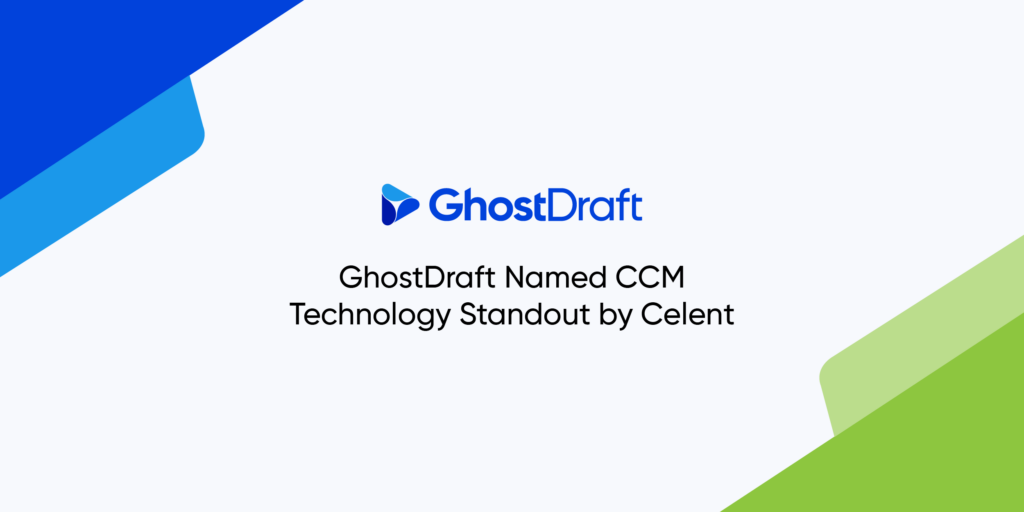
What is Customer Communications Management?
Last updated: May 9, 2023 | 5 min readIf you work in a customer-facing industry, you’ve probably heard of customer communications management, also known as CCM.
CCM has been around for decades, but it recently moved to the top of the priority list for many organizations.
With so many acronyms in business, it’s hard to keep up. So, what is CCM?
The concept seems simple. Customer communications management is the management of customer communications, right? Anyone with experience in the CCM realm can tell you it’s much more than you may think.
What is Customer Communications Management?
Customer communications management (CCM) is software for the design, development, delivery and management of content focused on communications targeted towards customers, prospects or partners.
Historically, organizations only used CCM for large-volume communications like monthly billing statements or customer correspondence. But the CCM industry is in transition and converging with the Customer Experience Management (CXM) market to provide companies with a holistic suite of tools.
As the way we communicate in life and business changes, our demands for personalized, two-way communications rise. With many companies are struggling to keep up, CCM providers are innovating intuitive solutions to help organizations future-proof their communications processes and technology.
Customer communications management, or CCM, is software for the design, development, delivery and management of content that is focused on communications targeted towards customers, prospects or partners.
The Forms and Documents
While CCM is expanding each day to cover all points of customer communications, like emails, texts and social media, the heart of CCM remains with forms and documents.
At a minimum, your organization probably communicates to customers at least once a month. Generally, this is in the form of a billing statement. For many companies, this is only a fraction of the customer touchpoints managed by a CCM solution.
For easier organization, there are three types of forms and documents sent to customers.
Batch Documents
When talking about CCM, many people think of batch communications. That’s because this is generally the most common type of communications sent by organizations.
Also called structured communications, batch forms and documents run in large volumes. This output tends to be scheduled and consistently formatted.
Using structured templates, a quality CCM solution leverages rules to auto-generate forms and documents that pulls data from your servers to personalize the communications to each customer.
Some common examples of batch communications include:
- Statements or bills
- Customer correspondence
- Invoices
On-Demand
The opposite of batch communications is on-demand. This type generates one-off communications that are not a part of a sequence. While this is the least common type of communication, many organizations still use this regularly.
Many times, creating on-demand forms and documents is a manual process. A valuable CCM solution will provide your business users with the ability to automate the generation of these communications.
Commonly, on-demand is generated based on triggers such as requests coming from:
- Websites
- Social media
- Phone
- Customer portals
Interactive
Interactive communications combine batch forms and documents with interactive capabilities. As customer expectations rise in every industry, the need for interactive customer communications is becoming more significant than ever.
Advanced CCM solutions empower business users with an intuitive platform to create structured templates with complex business logic. These interactive templates pull custom content and customer data to create highly personalized, omnichannel communications in the customers’ preferred language, format and tone.
Typically, marketing and sales materials or contracts use interactive communications, but many organizations are finding unique ways to make every touchpoint interactive and engaging.
The Benefits of Using CCM
There are three main ways for highly regulated, complex organizations to create value. And technology is the foundation for all three.
First, you can sell more. You can achieve this in several ways. You can expand into new markets, launch new and better products, upsell and cross-sell to existing customers, etc.
Next, you can create value by reducing the cost to operate. The two main ways to do this is to reduce expenses or increase productivity.
The third way to create value is to manage risk better. This includes improved pricing, better risk selection, and reducing claims losses and operational risk.
Acquire, strengthen and expand customer relations
Leveraging advanced CCM, companies have the tools to improve customer acquisition through timely, relevant, responsive and personalized proposals, quotes, contracts and other necessary communications.
CCM also enables you to boost customer loyalty and retention. Delivering personalized communications creates a better customer experience and drives brand loyalty.
Many organizations use CCM to expand customer relationships by engaging customers with improved communications. Engaged customers are more likely to try new products, spend more money and become brand advocates.
Create operational efficiencies
CCM helps companies dramatically reduce operational costs in several ways. Using CCM, you can streamline the communications process, cutting production time and getting to market faster than ever.
One key component of this is reducing dependency on IT for document creation and modification. Enabling business users with authoring control relieves the burden from expensive IT personnel.
Additionally, CCM gives non-technical users the ability to create one template and deliver the communications across several digital channels, reducing printing and postage cost.
Organizations who leverage advanced CCM reduce the number of templates needed and empower business users with an intuitive workflow and business logic tools, making communication generation more efficient.
Ensure compliance
With CCM, companies in highly regulated industries minimize compliance risk.
An automated communications production environment allows you to reduce errors and ensure consistency across all correspondence.
CCM software empowers you with automated version management and history archiving for complete auditing purposes.
Additionally, a collaborative and centralized environment for communication authoring provides flexibility for customization while nearly eliminating compliance risk.
Getting started with CCM
Now that you know the basics of CCM, it’s time to start delivering better customer experiences. We’ve collected a list of resources you can start using today to make your communications more successful.
Need more info on our Solutions?
Find out how we can help you create better experiences, greater efficiency and more agility to ensure your business is always in touch.


